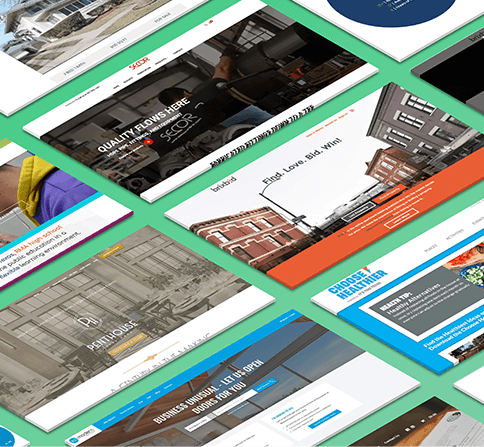Creating a successful app requires a strategic approach that begins with understanding the problem you aim to solve. By conducting in-depth research and interviews, you can tailor your app to address specific audience segments effectively. In this blog post, we’ll walk you through twelve essential steps to build a successful app, complete with the examples you provided.
Start with the Problem
What problem are you solving, and who has this problem? Focus only on the problem and not the solution, as you want to make sure you’ve correctly identified the problem.
Identify Audience Segments that Have this Problem
Many times the problem you’ve identified might overlap multiple industries, geographic regions, etc. It’s essential to understand all of these audiences. For example, a problem you find for tax accountants might also exist for mortgage brokers. By identifying these audiences, you might find one audience is larger than another, or one vertical experiences much more pain from this problem than another.
Interview Customers in these Specific Segments/Niches
Don’t assume you understand the problem. Ask these audiences about their specific problems, and when you do so, record it! That way, when it comes to ads and marketing, you have the unique language they use to describe their problem, so you can speak to the audience using their terminology, not yours.
Solve the Problem in a Unique and Interesting Way
In order for people to adopt new tools and processes, they have to be convinced your solution is better. Part of that is feeling like it’s unique compared to other ways they’ve tried to solve the problem in the past. The more unique and groundbreaking it is, the more likely they are to adopt it.
Co-brand for Different Niches – But Not Right Away
If your solution can work for different audiences, consider co-branding your solution for those niches. That way, it feels more personalized for those specific audiences. For example, if you’re a plumber, would you rather buy a generic accounting tool or an accounting tool built specifically for plumbers?
Prototype Your Solution
Instead of investing tens of thousands of dollars in an MVP, consider building a prototype that helps paint the picture, and present this prototype to your audience(s). There are tools that allow you to build web and mobile apps that look and feel like a real app, and often these can be built in less than a week.
Limit Your Marketing Efforts to Just One Audience
If you find multiple audiences could benefit from your solution, don’t try to capture all of them in the first release. Focus on the one or two that you feel it will resonate with the most. This could be anything from limiting your advertisement campaigns to specific niches or focusing on a specific geography (e.g., an app that helps people book reservations to a restaurant easier would be better suited rolling out in one or two cities rather than deploying across the entire US).
Focus on a Minimum Viable Product (MVP)
What is the minimal set of features needed to solve the problem you’ve identified for the audience you’re targeting? That’s what you should build. For instance, a restaurant reservation app that also helps you order an Uber might sound like a good idea, but if your audience really only cares about optimizing the reservation process, that’s really what you should focus on building.
Incorporate Metrics into Your App
You’ll want to track metrics in your app, whether it’s using a tool like Firebase Analytics or Google Analytics. This will allow you to see users’ behaviors, such as which parts of the app they are using the most, as well as how they use the app, how often they open the app, etc.
Use Industry Standards to Build Your App
This really comes down to the partner you hire to build your app, but make sure they’re using best practices and industry standards. You’ll want a technology stack that is scalable and has a long roadmap. Often the best way to vet this is to get different opinions from multiple agencies, play them off each other, e.g., “Agency ABC said I should build the app using React Native, but you said we should use Ionic, why is that better?”
Hire a Strong Product Strategist
When building your app, you want to make sure you understand the importance of product strategy. Your unique solution to your target customers’ problems might be ignored if the app is unusable. A common example of this is hiring a graphics designer instead of a product manager. The graphics designer might come up with a beautiful design, but if the user experience is clunky or suboptimal, people will get frustrated before they even understand the true benefits of your app.
Capture Customer Feedback through Closed Betas, Open Betas, and Official Launch
Going back to the point about interviewing potential customers, you’ve already spoken with them, so why not use them to test your prototype or MVP? Get feedback from them in exchange for a discount on the app (or even providing for free). Again, record these sessions and look for commonality/patterns so you’ll know what to focus on. And above all else, don’t try to make everyone happy! Remember, the original iPhone didn’t even support cut and paste and didn’t have a tactical keyboard, yet people bought in. The smartphone manufacturers who thought these features were dealbreakers were wrong and ultimately lost market share to Apple.
Conclusion
Building a successful app requires a well-structured approach that centers on understanding the problem, identifying the target audience, and delivering a unique and user-friendly solution. By following these twelve essential steps, you’ll be better equipped to create an app that not only addresses your users’ needs but also excels in a competitive app market.
Make a Wise Choice
We would love to add you to our Portfolio but only if we understand your issue, map out the project, listen to your concerns, plan for the future, and are as excited about MVP as you are. To start the process, contact us here.

